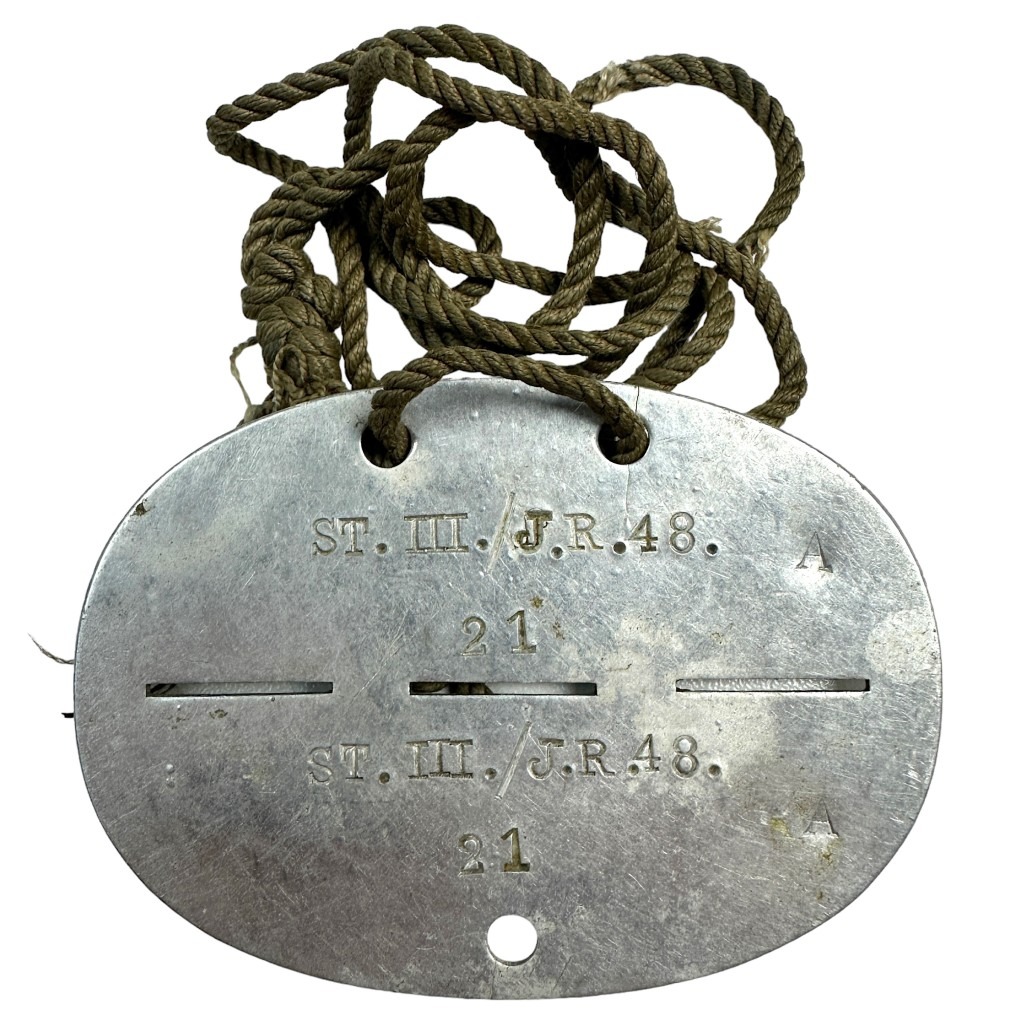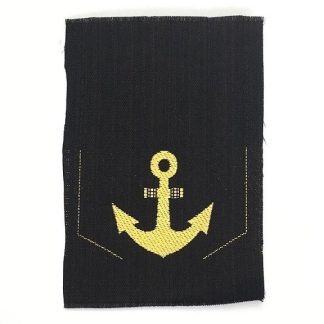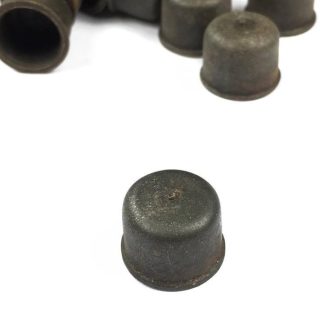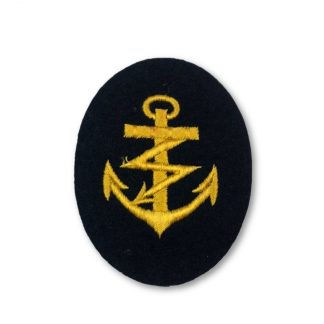Original WWII German Erkennungsmarke Infanterie-Regiment 48
65 €
This German Erkennungsmarke is in good condition and was worn by a member of the Infanterie-Regiment 48.
The Döberitz Infantry Regiment was completely formed at the Döberitz training area in military district III when the Reichswehr was expanded on October 1, 1934. It was formed from detachments of the 5th (Prussian) Infantry Regiment. The 2nd, 3rd and 9th companies of this regiment provided the staffs for the new battalions, and there were also levies from staffs and communications platoons. After its formation, the regiment was under the command of Infanterieführer II. At the end of July 1935, the regiment moved to its final garrison in Neustrelitz, in Wehrkreis II, where it moved into newly built barracks. However, the III Battalion only stayed for a short time, moving back to the Döberitz training area. On October 15, 1935, the regiment was renamed Infanterie-Regiment 48 when the units were disarmed after regaining military sovereignty. The regiment was now also subordinate to the 12th Infantry Division. The III Battalion moved into its new barracks in Güstrow, also in Wehrkreis II, on April 1, 1936. On October 6, 1936, a supplementary battalion of Infanterie-Regiment 48 was also formed in Neustrelitz following the transfer and renaming of Ergänzungs-Bataillon 12. On October 12, 1937, the III Battalion of the regiment was transferred to Infanterie-Regiment 27 as the I Battalion.
The III Battalion was only re-formed shortly before mobilization for the Second World War in July 1939. While the regiment was deployed in the Polish campaign at the beginning of the Second World War in the summer of 1939, the new III Battalion remained with the 207th Infantry Division in Pomerania until October 19, 1939. With the latter, the battalion pushed through to the Baltic Sea via Karthaus northwest of Danzig, suffering considerable losses in the process. The rest of the regiment advanced from East Prussia via Mlawa to the eastern front of Warsaw. At the end of the Polish campaign, the regiment was assembled near Siegburg. On January 31, 1940, the II Battalion had to be transferred to the 292nd Infantry Division as the I Battalion of the 506 Infantry Regiment. The detachments were immediately replaced. From May 10, 1940, the regiment followed the Panzerspitzen through the Ardennes, penetrated the northern wing of the Maginot Line and fought south of the Dunkirk Cauldron. The armistice was followed by coastal protection in the Vendée, then on the Contentin peninsula the preparation of the “Sea Lion” operation with a later transfer to the Netherlands.
On October 10, 1940, the III Battalion was transferred to the 110th Infantry Division as the I Battalion of the 252nd Infantry Regiment. The battalion was immediately replaced. In May 1941, the regiment moved to the East Prussian border in the Gumbinnen – Insterburg area. On September 1, 1942, the 9th-12th companies were disbanded to form a 15th bicycle company. On October 15, 1942, the regiment was renamed Grenadier-Regiment 48.
Unique for the militaria or World War II collection!
Article number: 12744
Originele WWII Duitse Erkennungsmarke Infanterie-Regiment 48
Deze Duitse Erkennungsmarke is in goede conditie en werd gedragen door een lid van het Infanterie-Regiment 48.
Het Döberitz Infanterie Regiment werd volledig gevormd op het oefenterrein Döberitz in militair district III toen de Reichswehr op 1 oktober 1934 werd uitgebreid. Het werd gevormd uit detachementen van het 5e (Pruisische) Infanterie Regiment. De 2e, 3e en 9e compagnie van dit regiment vormden het hoofdkwartier voor de nieuwe bataljons, daarnaast waren er legers van staf- en communicatiepelotons. Na de oprichting stond het regiment onder bevel van Infanterieführer II. Eind juli 1935 verhuisde het regiment naar zijn definitieve garnizoen in Neustrelitz, in Wehrkreis II, waar het zijn intrek nam in nieuw gebouwde barakken. Het IIIe Bataljon bleef echter maar kort en verhuisde terug naar het militaire oefenterrein Döberitz. Op 15 oktober 1935 werd het regiment omgedoopt tot Infanterie-Regiment 48 toen de eenheden werden ontwapend na het herwinnen van de militaire soevereiniteit. Het regiment was nu ook ondergeschikt aan de 12e Infanterie Divisie. Het III Bataljon betrok zijn nieuwe kazerne in Güstrow, ook Wehrkreis II, op 1 april 1936. Op 6 oktober 1936 werd ook een aanvullend bataljon van Infanterie-Regiment 48 gevormd in Neustrelitz na de overdracht en hernoeming van Ergänzungs-Bataillon 12. Op 12 oktober 1937 werd het III Bataljon van het regiment overgedragen aan Infanterie-Regiment 27 als het I Bataljon.
Het III Bataljon werd pas kort voor de mobilisatie voor de Tweede Wereldoorlog in juli 1939 opnieuw gevormd. Terwijl het regiment werd ingezet in de Poolse campagne aan het begin van de Tweede Wereldoorlog in de zomer van 1939, bleef het nieuwe III Bataljon tot 19 oktober 1939 bij de 207e Infanterie Divisie in Pommeren. Met deze divisie stootte het bataljon door naar de Baltische Zee via Karthaus ten noordwesten van Danzig en leed daarbij aanzienlijke verliezen. De rest van het regiment rukte op van Oost-Pruisen via Mlawa naar het oostfront van Warschau. Aan het einde van de Poolse campagne werd het regiment verzameld bij Siegburg. Op 31 januari 1940 moest het IIe Bataljon worden overgeplaatst naar de 292e Infanterie Divisie als het Ie Bataljon van het 506 Regiment Infanterie. De detachementen werden onmiddellijk vervangen. Vanaf 10 mei 1940 volgde het regiment de Panzerspitzen door de Ardennen, drong door tot de noordelijke vleugel van de Maginotlinie en vocht ten zuiden van de Duinkerkse Cauldron. De wapenstilstand werd gevolgd door kustverdediging in de Vendée, daarna op het schiereiland Contentin de voorbereiding van de operatie “Zeeleeuw” met een latere overplaatsing naar Nederland.
Op 10 oktober 1940 werd het III Bataljon overgeplaatst naar de 110e Infanterie Divisie als het I Bataljon van het 252e Infanterie Regiment. Het bataljon werd onmiddellijk vervangen. In mei 1941 verhuisde het regiment naar de Oost-Pruisische grens in het gebied Gumbinnen – Insterburg. Op 1 september 1942 werden de 9e-12e compagnieën opgeheven en werd een 15e wielercompagnie gevormd. Op 15 oktober 1942 werd het regiment omgedoopt tot Grenadier-Regiment 48.
Uniek voor de militaria of Tweede Wereldoorlog collectie!
Artikelnummmer: 12744
Out of stock





